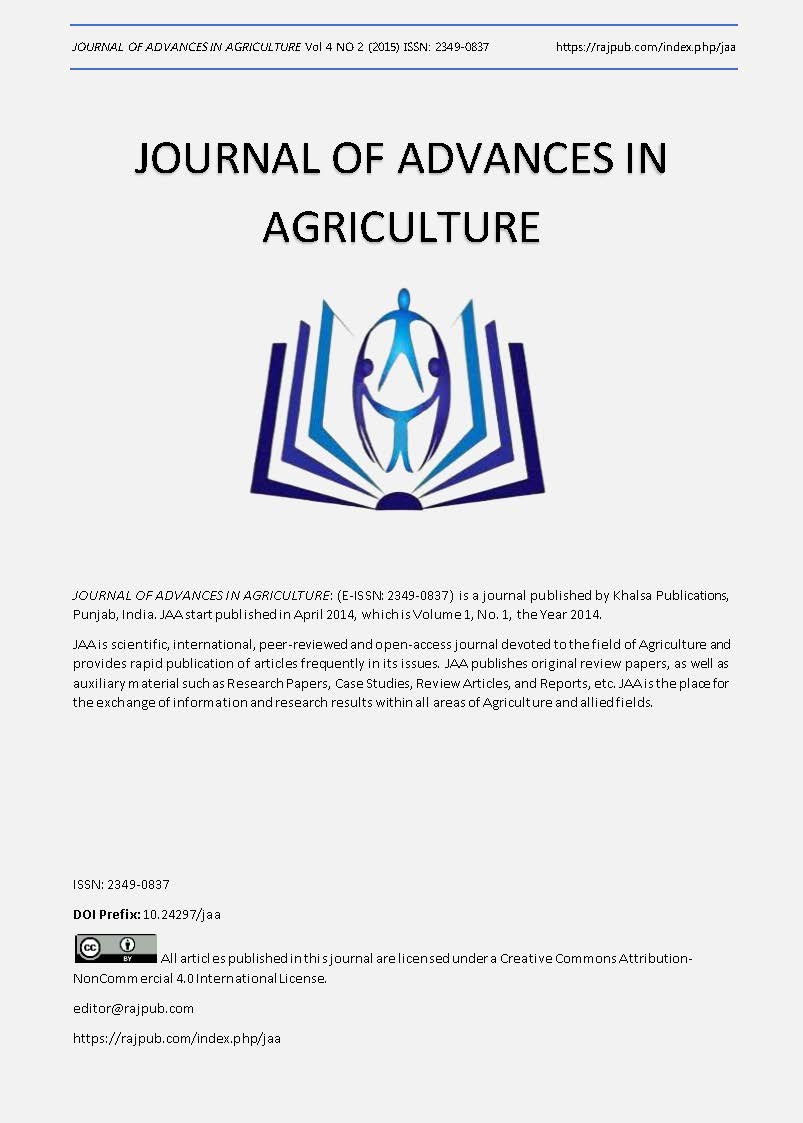Biological indicators of soil quality in natural and cultivated subtropical systems
DOI:
https://doi.org/10.24297/jaa.v4i2.4269Keywords:
Land use change, Acid phosphatase enzyme, Soil respiration, Soil organic carbon, Subtropical soil quality.Abstract
The objective of this work was to evaluate the effects of forest conversion at to agricultural production on some biological indicators to quantify their relationship in subtropical ecosystems. The experimental design was in romized complete blocks, with four treatments: subtropical rainforest (F), yerba mate crops (I) (Ilex paraguariensis SH.); citrus crops (C) (Citrus unshiu Marc.); tobacco crops (T) (Nicotiana tabacum L.). Soil samples were taken from 0-0.10, 0.10-0.20, 0.20-0.30m deep. The variables measured were: APA, clay content, pH, total nitrogen (N), available phosphorus (P), respiration (RE) soil organic carbon (SOC). These soils showed an acid reaction clay content over 650 g.kg-1. SOC N content were higher in soils under subtropical rainforest, intermediate under citrus crops, lower under tobacco yerba mate crops. The highest APA was found under subtropical rainforest decreased in the three depths. In all treatments, APA was higher in the superficial layer; the 76% of APA variability was explained by N P. APA can indicate changes in soil quality, when comparing subtropical rainforest to agricultural systems. APA does not indicate effects between soils under different crops. Our data suggest that acid phosphatase activity is closely associated to soil nitrogen organic content as energy source.Â
Downloads
Downloads
Published
How to Cite
Issue
Section
License
 All articles published in Journal of Advances in Linguistics are licensed under a Creative Commons Attribution 4.0 International License.
All articles published in Journal of Advances in Linguistics are licensed under a Creative Commons Attribution 4.0 International License.




